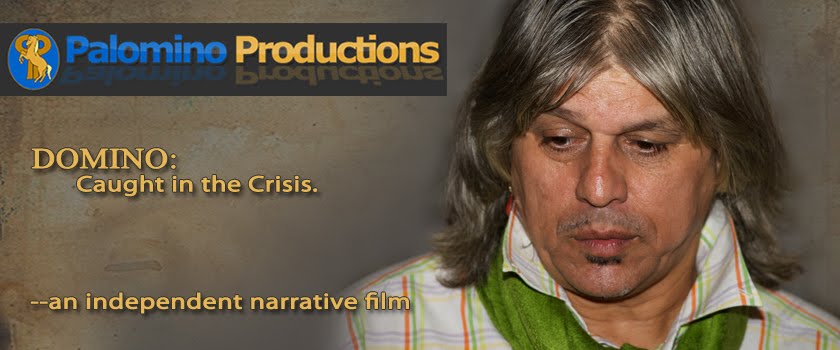One requirement of film making is finding a good location in which to shoot. This can be a challenge no matter where you are, especially for the independent filmmaker with a limited budget. That's one of the reasons why the big boys, at least in the old days, would build sets. You don't have to worry about light coming in in the wrong place or, even worse, not having enough light (and so having to rent expensive equipment, find enough electricity to power all that equipment, and so forth).
In addition, if you're working on a set, you don't have to worry about the guys down the street starting their construction project on the day you were to shoot your most important scene. You don't have to worry about pedestrians walking through the set or, more often, a car driving by at the wrong moment.
 |
| For part of this scene, we simply stopped traffic. |
Now, a lot of people would say if you're shooting a street scene, a car driving by is natural and why not include it? Well, you may want to have a car drive by but if it isn't carefully planned, it's a nightmare when it comes to editing and you just might have to reshoot an entire scene because of the wrong car passing at the wrong time. Trust me on this one.
In Spain, finding a good location isn't really any harder or easier than in any other places I've been. But one peculiarity of Spain is that it's much more normal to "borrow" a location, meaning that someone will suggest a place where his/her friend works, or which his/her friend owns, and you can shoot there for free, within limitations but taking into account your own necessities.
In the case of Domino, we haven't had to pay for any location at all, not even the "bank." I like that.
 |
| The offices upstairs are where we filmed the bank scenes. |
In the United States, this kind of helping hand is normal for a documentary, but much less common in the case of a dramatic narrative. I guess people assume if you can pay for actors and a crew, you can pay for a location. They don't realize you've already gone broke paying for the actors and crew.
And on the subject of costs and favors, in Spain I've even had the nearby lamp shop lend me light bulbs and lamp shades. Plus within limits, some actors and crew are willing to let you pay them later, "when you start making a profit" (ha, ha, ha). This is also the case in the U.S., especially if the people happen to be your friends; or the friends of your lead actor, for example.
 |
| El Baratillo is the lamp shop that lent us light bulbs and lamp shades. |
With the current economic situation in Spain, however, where over 8,000 families in Jerez have been evicted from their homes for inability to pay their mortgage; where the unemployment rate for people 30 and under is supposed to be more than 50%, and so forth--I really don't like to ask this of people.
But I have been willing to let people work for me for less that we'd anticipated. I've got my limits, too.
The last thing I want to mention about working in Spain is the problem of noise. You have that problem everywhere, and it is a sticky one, but in Spain with all the stone and with the narrow streets, you get an awful lot of echo that you don't in a place like the United States.
In general, working in Spain has its peculiarities but it's certainly not an impossible location. And there is LOTS of local color.












